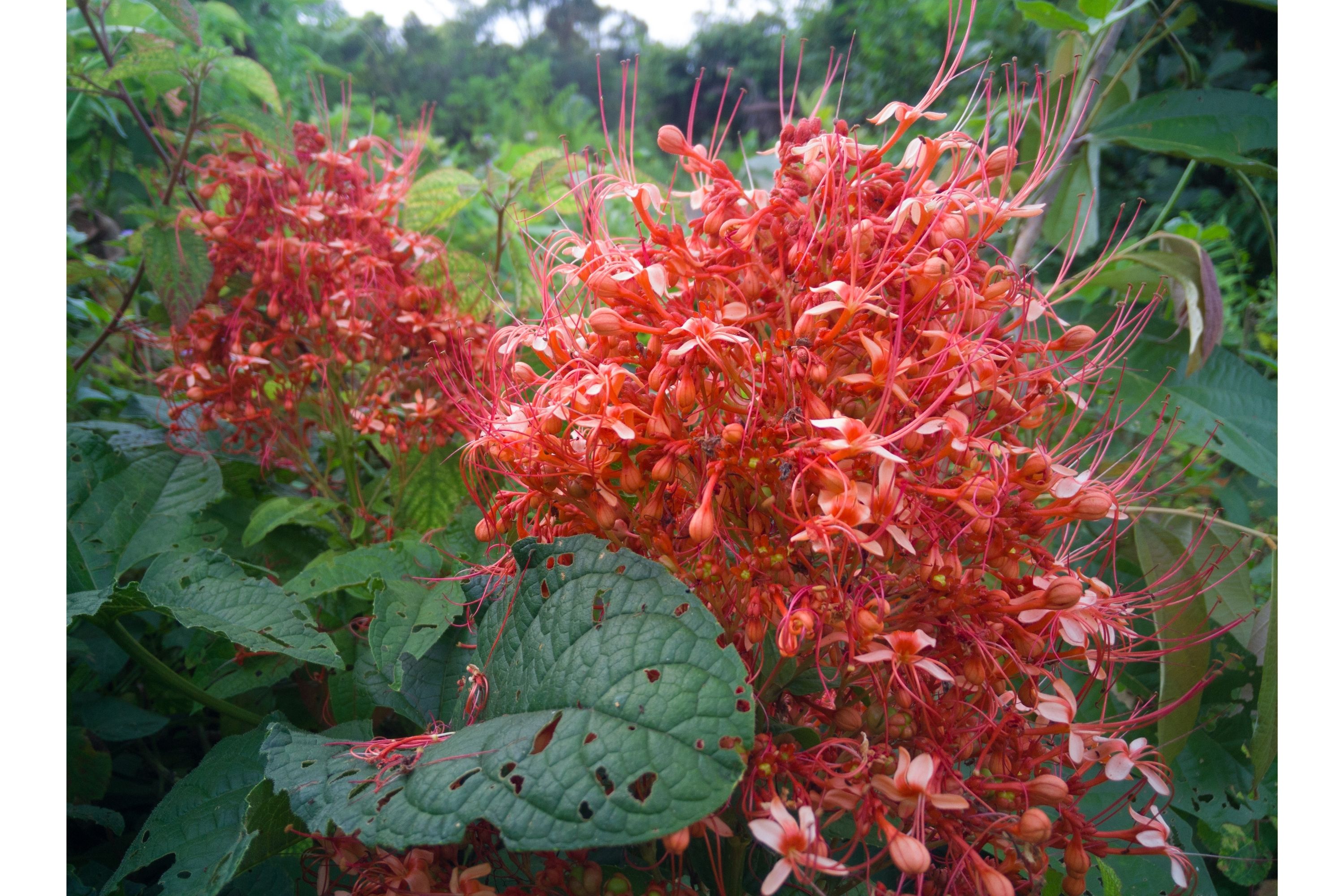Torch tree
(Ixora pavetta)

Description
Ixora pavetta (Syn. Ixora parviflora) the torch tree, is a plant in the family Rubiaceae. This species is found in South Asia. The species is commonly seen in Ballari district of Karnataka, India. It is called as goravi in Kannada. People use the branches of this tree for making walls and paste with mud for their thatched huts in villages, but now this practice has become obsolete owing to modern housing materials. Summer is the fruiting season and the fruits are globose, 2-seeded, become black when ripened. Indian sloth bears eat the fruits and the seeds are dispersed through its scat. Ixora is a genus of flowering plants in the family Rubiaceae. It is the only genus in the tribe Ixoreae. It consists of tropical evergreen trees and shrubs and holds around 562 species.Though native to the tropical and subtropical areas throughout the world, its centre of diversity is in Tropical Asia. Ixora also grows commonly in subtropical climates in the United States, such as Florida where it is commonly known as West Indian jasmine. Other common names include viruchi, kiskaara, kepale, rangan, kheme, ponna, chann tanea, techi, pan, siantan, jarum-jarum/jejarum, jungle flame, jungle geranium, and cruz de Malta, among others. The plants possess leathery leaves, ranging from 3 to 6 inches in length, and produce large clusters of tiny flowers in the summer. Members of Ixora prefer acidic soil, and are suitable choices for bonsai. It is also a popular choice for hedges in parts of South East Asia. In tropical climates they flower year round and are commonly used in Hindu worship, as well as in ayurveda and Indian folk medicine.
Taxonomic tree:







